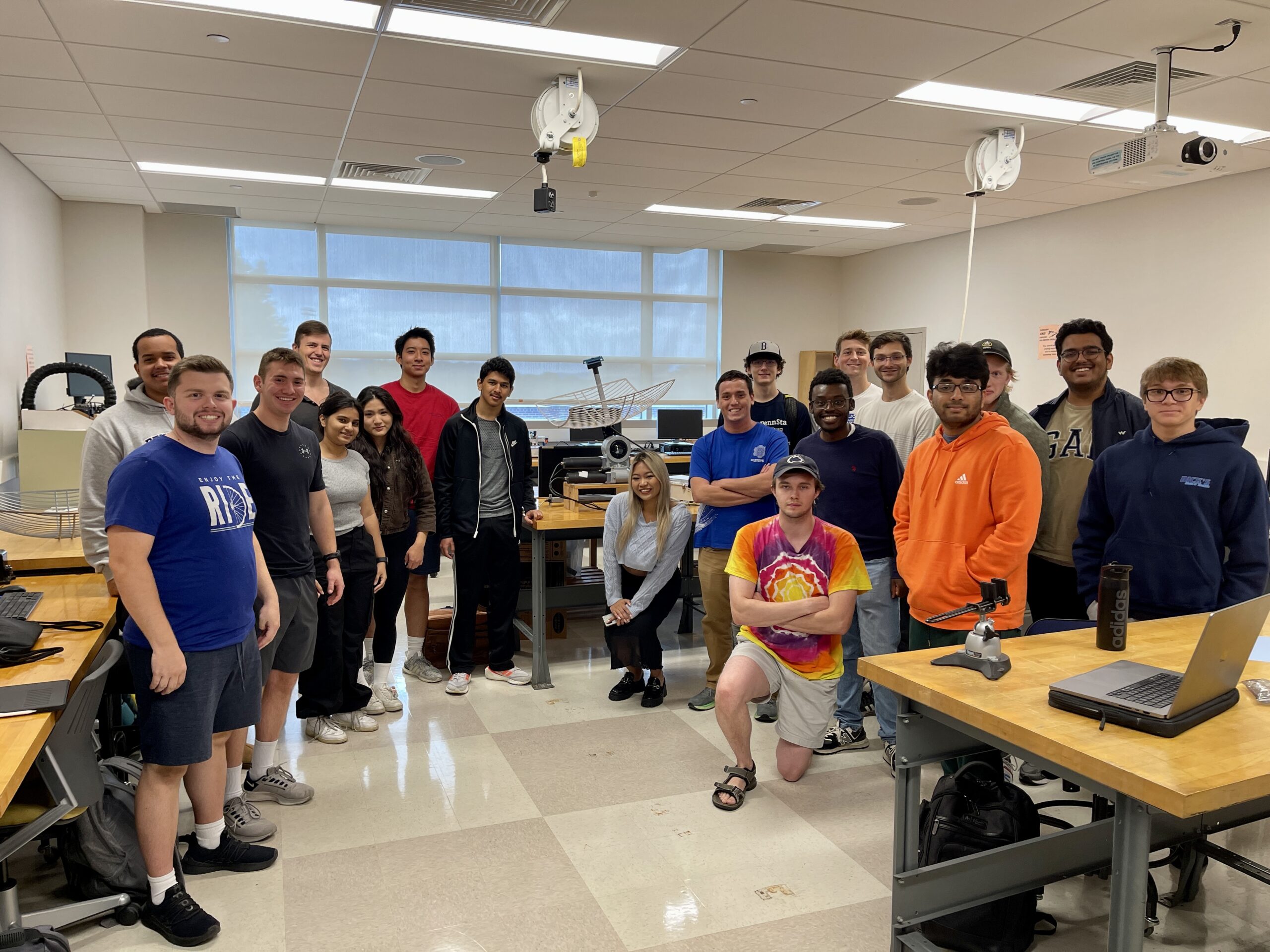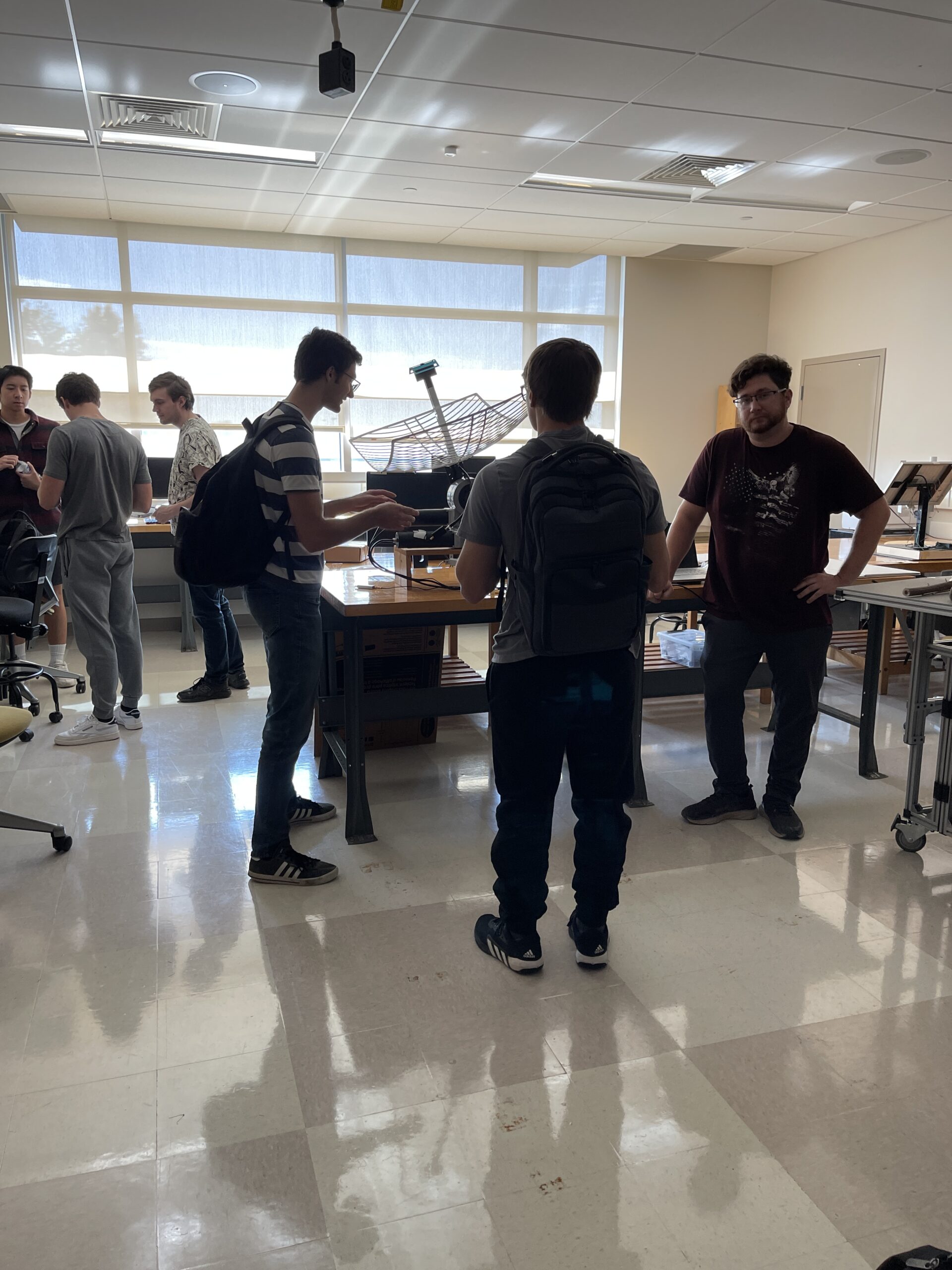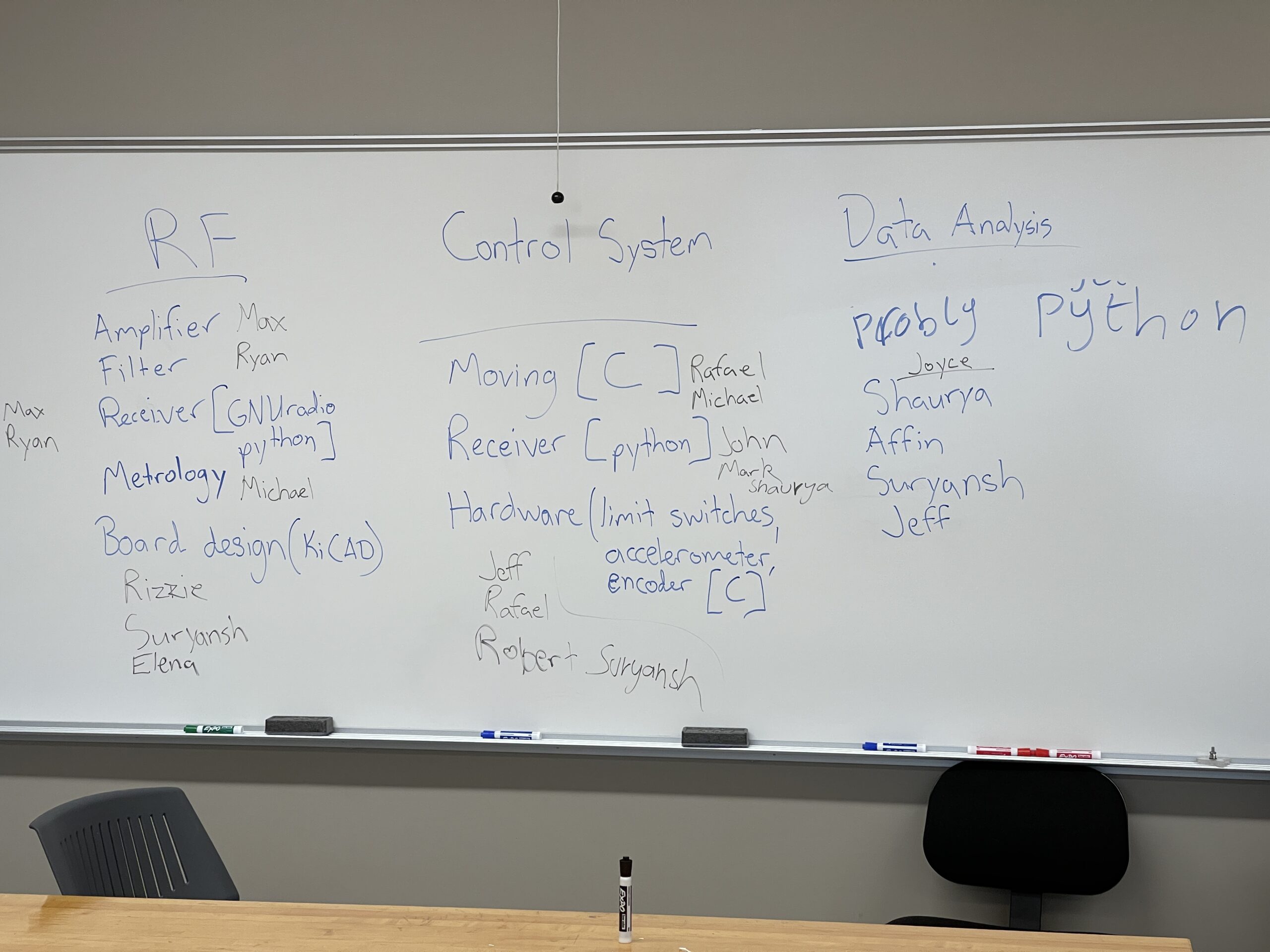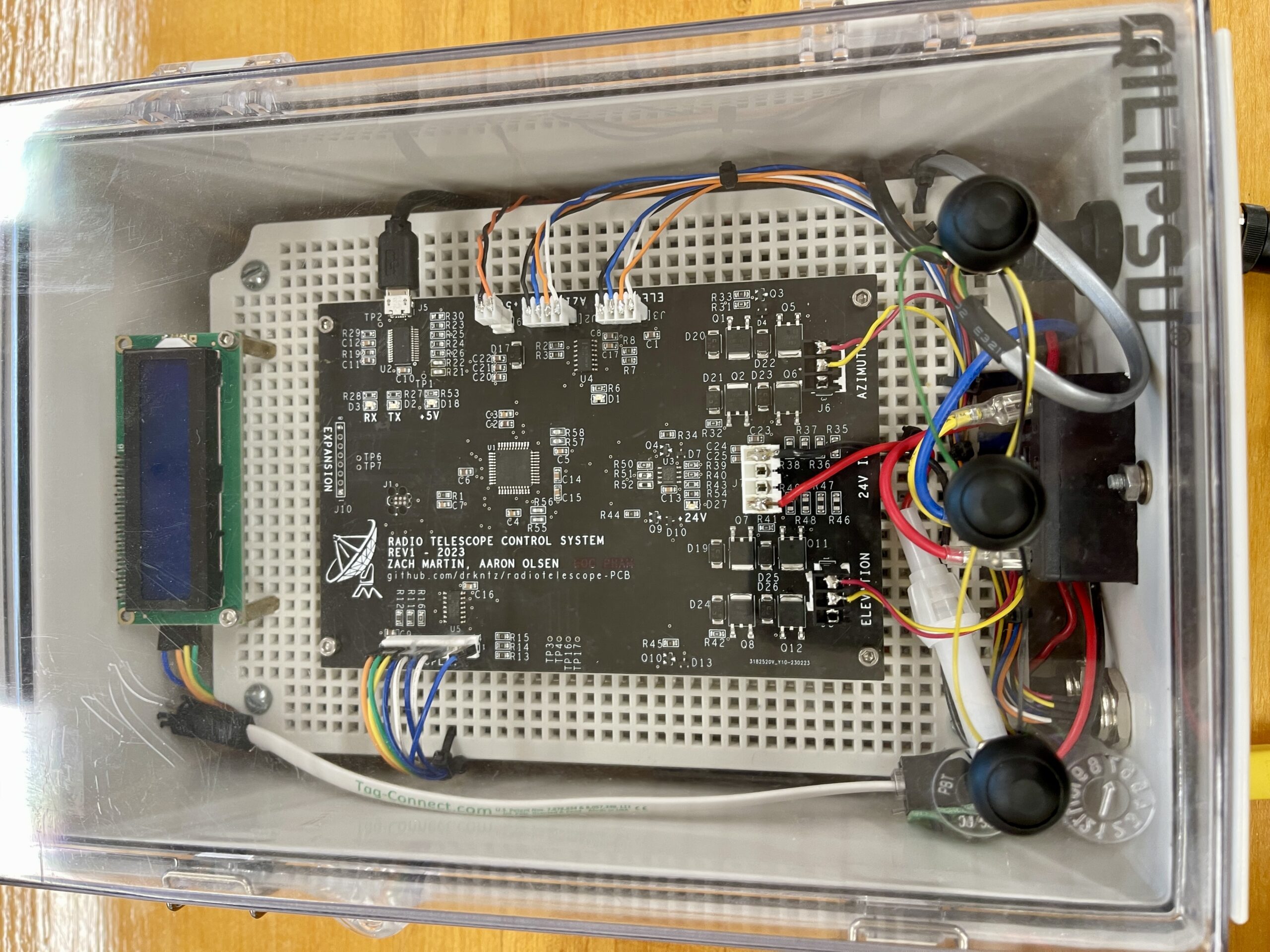
Initial Start
The Radio Telescope project, a flagship project of IEEE, has been its longest-running initiative since its inception in January 2022. Spearheaded by Zachary Martin and Jeremiah Ddumba, it began as a modest radio telescope – a project fueled by their interest in radio astronomy. The project quickly captured the attention of other students and faculty, evolving from a small-scale endeavor into an ambitious plan to construct a 5-dish array on campus and derive a thesis from its findings.
Initially, to kickstart this ambitious project, IEEE reached out to the entire School of Science, Engineering, and Technology (SSET) at Penn State to connect us with as many students as possible who would be interested. We hosted a series of workshops to make this project accessible to any interested student. These included sessions on Software Defined Radio (SDR), showcasing the capabilities of a simple RTL-SDR kit, like observing the Hydrogen Line. Another workshop focused on Allegro, teaching students PCB design for the motor control system in the telescope, enhancing its precision to a remarkable 0.1-degree accuracy. Workshops on building receivers, amplifiers, soldering, and filters were also conducted, raising interest and equipping students with the skills needed to make significant contributions to the project.
Collaboration has been key. We’ve partnered with several departments at Penn State Harrisburg – Electrical Engineering/Physics, Computer Science/Math, and Mechanical Engineering. Their guidance, willingness to incorporate the project into their curriculum, and efforts in student recruitment have been invaluable.
Significant support also came from Rhode & Swartz, who supplied a $20,000 spectrum analyzer. This critical equipment aids in image creation and data analysis for the Astronomy department at Penn State University Park.


Three main teams:
The Radio Telescope project is split into three larger teams tackling different parts of the project.
Radio Frequency Team (Electrical Engineering): This team is further split into sub-teams focusing on amplifiers, filters, and board design. They address challenges such as interference, amplifying the signals we get, and working around Harrisburg International Airport restrictions.
Control Systems Team (Mechanical Engineering): A newly formed team, they are developing hardware limits for the dish to safeguard against extreme weather conditions and power outages. This includes implementing limit switches to prevent damage.
Data Science Team (Computer Science): Their responsibilities range from data collection and conversion to image processing. They’re also refining software for motor control, ensuring automatic data collection, and implementing safety measures for adverse weather conditions.

Current status of the project
The Radio Telescope project, which is now led by Michael Cieslak, Peter Lee, and Jeremiah Ddumba, has steadily progressed through its iterations at Penn State Harrisburg. It started modestly with a small 1.5-foot dish, similar to those used for cable TV, and then moved to a more functional 1-meter mesh dish for the 2nd and 3rd prototypes. This change addressed practical issues like water accumulation and improved the dish’s ability to collect radio waves.
These initiatives, encompassing the development of prototypes, the hosting of workshops, and the establishment of key collaborations, significantly contributed to IEEE winning the “Best Club of the Year” award for the 2022-2023 academic year.
Currently, in its fourth iteration, the project has scaled up to a 10-foot mesh dish. This larger size enhances the project’s capabilities, and the team has adapted the motor and control systems to accommodate this upgrade.
An important aspect of the project’s development has been its integration into the academic framework. It has been woven into capstone projects, connected with departmental activities for extra credit, and included in course curriculums, ensuring a consistent progression and raising awareness among newer students. For example, Zachary Martin and Aaron Olsen, former IEEE Technical Leads, made significant contributions to the latest iteration. They developed a control system for the 10-foot dish, an effort that earned them recognition, including the 2023 IEEE Susquehanna Section Capstone Award. Their achievement not only advanced the Radio Telescope project but also contributed to the educational landscape of the university.
As the Radio Telescope project continues to grow and evolve, it stands as an example of how academic projects can bridge theoretical knowledge and practical application, especially in a field as intriguing as radio astronomy.


